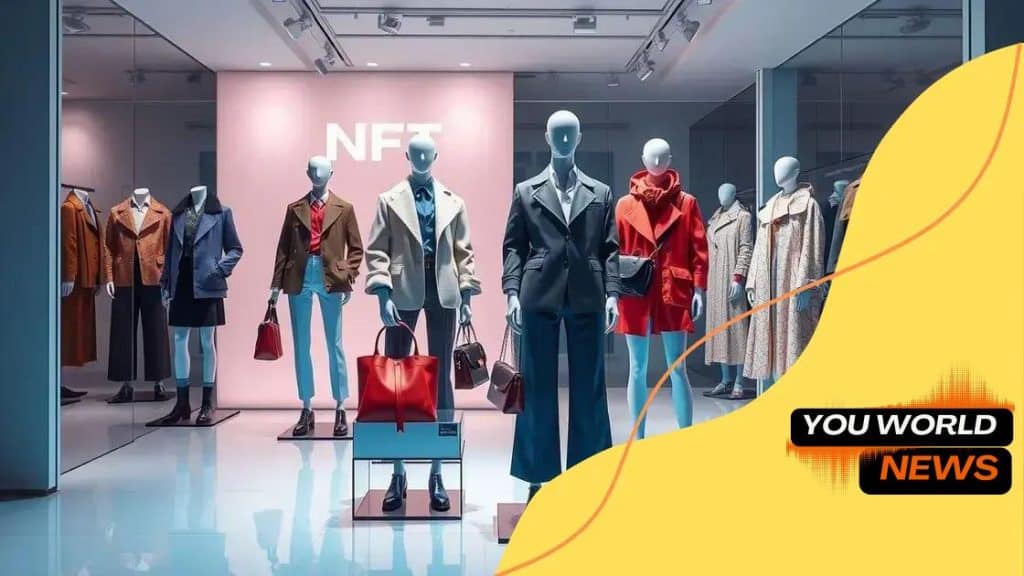How NFTs are changing fashion ownership dynamics

How NFTs are changing fashion ownership by enabling unique digital assets, enhancing brand loyalty, and creating virtual experiences for consumers, while also presenting challenges like environmental impact and market volatility.
How NFTs are changing fashion ownership is revolutionizing the way we think about style and individuality. Ever wondered how these digital assets can redefine your wardrobe? Let’s dive in.
Understanding NFTs in fashion
Understanding NFTs in fashion is crucial as the industry evolves. Non-fungible tokens are unique digital assets that represent ownership of specific items or rights. This innovation is changing how clothing, accessories, and even fashion art are perceived.
NFTs allow designers to connect directly with consumers. They can sell their work without intermediaries, ensuring more profit and control. Additionally, NFTs provide a new way for collectors to own and trade fashion items securely.
Benefits of NFTs in Fashion
By incorporating NFTs, fashion brands can:
- Enhance authenticity: NFTs verify the provenance of items, combating counterfeiting.
- Offer digital collections: Brands can sell exclusive digital wearables for avatars in virtual worlds.
- Engage fans: Unique experiences can be offered through NFT ownership, such as backstage access to fashion shows.
Furthermore, customers appreciate the digital ownership aspect of NFTs. They feel more connected to their purchases, knowing they own a piece of digital art linked to a designer. As consumers become more tech-savvy, they expect brands to embrace new technologies like this.
Challenges in Understanding NFTs
While the potential is vast, there are challenges. Many people still lack understanding of how NFTs work. The market is also volatile, which can deter brands from entering.
Despite these hurdles, the future looks bright. As education around NFTs increases, more brands are likely to adopt this technology. This will lead to a more diverse and engaging fashion landscape, blending reality and virtuality.
The impact of NFTs on luxury brands
The impact of NFTs on luxury brands is significant and transformative. As the fashion industry shifts, these digital assets offer new ways for luxury brands to engage with their customers and monetize their creations.
Luxury fashion houses are starting to explore NFTs to enhance exclusivity. By creating limited digital items, brands increase their appeal. Ownership of these unique NFTs connects consumers with their favorite brands in deeper ways.
Benefits for Luxury Brands
Here are some notable benefits:
- Enhanced brand loyalty: Exclusive NFT drops can create excitement and strengthen relationships with consumers.
- New revenue streams: Selling NFTs allows brands to tap into a growing market of digital collectors.
- Innovative storytelling: Brands can use NFTs to share their heritage, values, and creativity through digital art and experiences.
Luxury brands are also using NFTs to provide added value. For instance, some may offer physical items alongside digital counterparts. This method helps bridge the gap between traditional luxury and digital ownership.
Challenges Faced by Luxury Brands
Despite the benefits, adopting NFTs presents challenges. Many consumers are still unfamiliar with how they work. There’s also the issue of environmental impact, as some NFT platforms require significant energy use.
However, the potential for a new digital luxury market is immense. As more brands embrace technology, the landscape will undoubtedly change. Luxury brands can harness NFTs to reach tech-savvy consumers while reinforcing their brand identities.
How NFTs enable digital ownership

How NFTs enable digital ownership is a fascinating topic. Non-fungible tokens provide a way for people to own unique digital items securely. This concept fundamentally shifts our understanding of ownership in the digital world.
With NFTs, individuals can buy, sell, and trade digital assets like art, music, and fashion. Each NFT has a specific identifier that sets it apart from other tokens, ensuring that it remains unique. This uniqueness is what creates value.
The Importance of Provenance
One key factor is the ability to verify provenance through blockchain technology. This means that buyers can see the entire history of an item, including its previous owners and creators. This transparency fosters trust and is crucial for collectors.
- Secure ownership: NFTs are stored on a blockchain, making them less vulnerable to fraud.
- Royalties for creators: Artists can receive a percentage of sales each time their NFT changes hands.
- Accessibility: Anyone with internet access can participate in the NFT market, democratizing ownership.
Moreover, digital ownership through NFTs has implications for how we view art and fashion. Artists can co-create with consumers, offering them a stake in their work. This collaboration empowers both the creator and the buyer.
Future of Digital Ownership
As the technology matures, we will likely see new forms of digital ownership. For example, brands might combine physical products with NFTs. This blend can offer customers a more engaging experience, where owning the digital version enhances the value of the physical item.
The concept of ownership itself is evolving. As people increasingly embrace digital environments, NFTs help define what it means to own something in a virtual space. Their influence could reshape industries beyond just fashion and art, affecting real estate, gaming, and more.
Challenges in adopting NFTs in fashion
Challenges in adopting NFTs in fashion present important considerations for brands and consumers alike. While the potential is exciting, several obstacles must be addressed before widespread acceptance.
One significant challenge is the environmental impact associated with blockchain technology. Many NFTs are minted on platforms that consume large amounts of energy, raising concerns about sustainability. As consumers become more eco-conscious, brands need to find ways to lessen their carbon footprint.
Market Volatility
Another issue involves market volatility. The value of NFTs can fluctuate greatly, making investments risky. Many brands are cautious about diving into this unsteady market, fearing the consequences of poorly received launches. This capricious nature can be daunting for those unfamiliar with digital assets.
- Regulatory uncertainty: The legal framework surrounding NFTs is still evolving, leading to uncertainties in ownership rights and taxes.
- Consumer understanding: NFT technologies are complex, and many people still do not fully understand how they work, creating barriers to adoption.
- Counterfeiting concerns: While NFTs aim to prove authenticity, counterfeiters may still find ways to replicate desirable items.
Despite these challenges, there is potential for innovative solutions. For example, brands might focus on education and transparency to help consumers understand NFTs better. By addressing these concerns head-on, the fashion industry can foster a more supportive environment for digital assets.
Emerging Solutions
Some companies are already exploring greener alternatives and more efficient blockchain technologies. This trend could help align the fashion industry’s interests with environmental responsibility. As these solutions emerge, the path to integrating NFTs in fashion can become clearer.
Future trends in fashion and NFTs
The future trends in fashion and NFTs show exciting possibilities as the two worlds increasingly intersect. With advancements in technology, we can expect new ways for consumers to engage with fashion brands and their offerings.
One major trend is the rise of virtual fashion shows. These shows use NFTs to create exclusive experiences for audiences. By attending, viewers can purchase unique digital items that represent the latest collections. This format allows brands to reach a global audience without the limitations of physical shows.
Digital Wearables and Avatars
Another trend is the creation of digital wearables for avatars in virtual worlds. People are spending more time online, and they want to express their style through their virtual characters. Brands can create limited edition digital clothing and accessories as NFTs, allowing fans to showcase their favorite pieces.
- Partnerships with gaming: Fashion brands are teaming up with video games to offer special in-game items.
- Eco-friendly options: Innovations in sustainable NFT technology may come to the forefront, aligning digital fashion with growing environmental concerns.
- Memberships and exclusives: Brands could offer NFT memberships, granting owners early access to collections or special events.
Consumer behavior is also shifting. Many young shoppers prefer unique, limited-edition pieces over mass-produced items. This change creates a ripe market for brands to introduce NFTs as tokens of exclusivity. Limited releases can heighten demand, allowing brands to engage with their audience on a deeper level.
The Role of Augmented Reality (AR)
Furthermore, augmented reality (AR) technology will enhance how consumers interact with NFTs. Imagine being able to see how a digital outfit looks on yourself through your phone before purchasing. This technology could link the physical and digital worlds, making fashion more interactive.
As the future unfolds, the integration of NFTs in fashion will likely bring continuous innovation. Brands willing to explore these developments can create more engaging and meaningful experiences for their customers.
FAQ – Frequently Asked Questions about NFTs in Fashion
What are NFTs?
NFTs, or non-fungible tokens, are unique digital assets that represent ownership of a specific item or piece of content on the blockchain.
How do NFTs impact fashion brands?
NFTs enable fashion brands to create exclusive digital collections, engage consumers in new ways, and enhance brand loyalty through unique ownership experiences.
What challenges do brands face when adopting NFTs?
Brands may encounter challenges such as environmental impact, market volatility, and consumer understanding of how NFTs work.
What are the future trends for NFTs in the fashion industry?
Future trends include virtual fashion shows, digital wearables for avatars, and the use of augmented reality to enhance the shopping experience.





